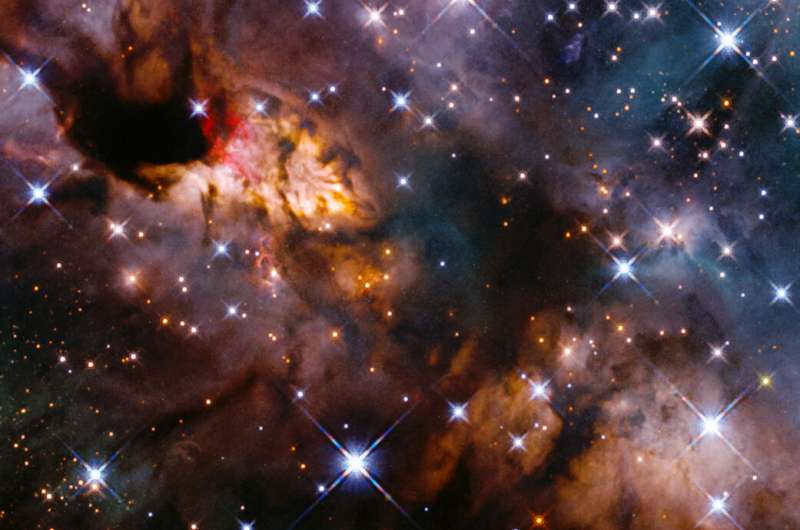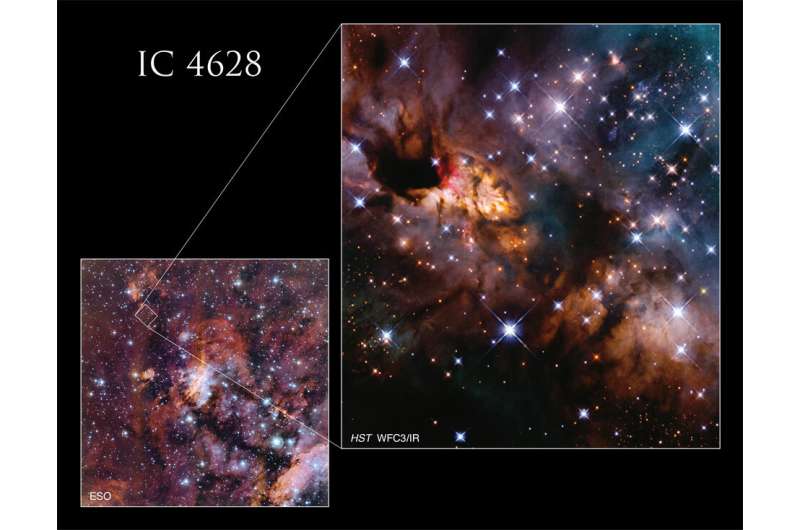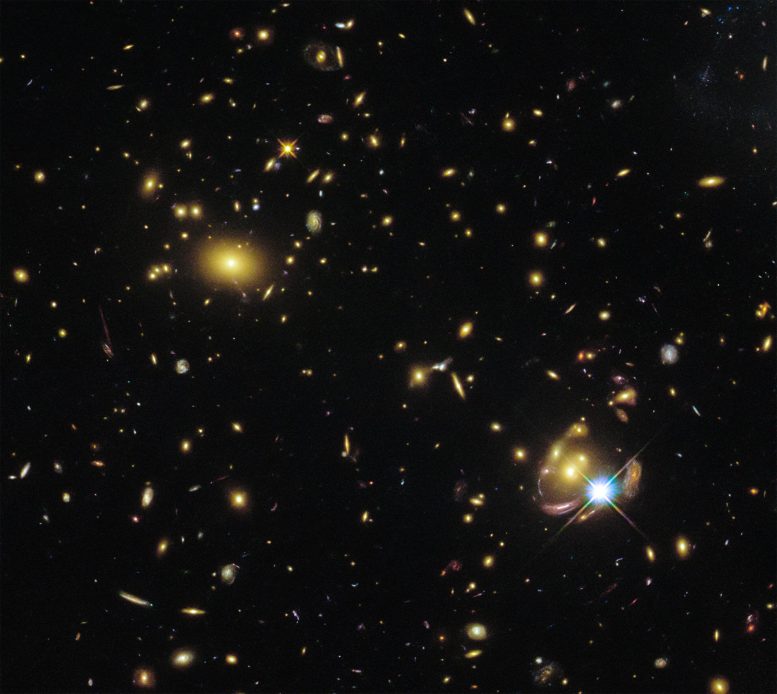Nov 22, 2021 by Enrico de Lazaro
The NASA/ESA Hubble Space Telescope shot this image of a large star-forming region known as the Flame Nebula.
This Hubble image shows the Flame Nebula. Image credit: Hubble / NASA / ESA / N. Da Rio, University of Virginia / Gladys Kober, NASA & Catholic University of America.
The Flame Nebula is an emission nebula located about 1,400 light-years away in the constellation of Orion.
Otherwise known as NGC 2024 and Sh2-277, the nebula is approximately 12 light-years wide.
It was discovered by the German-born British astronomer William Herschel on January 1, 1786.
/ NASA / ESA / N. Da Rio, University of Virginia / ESO / DSS2 / D. De Martin / Gladys Kober, NASA & Catholic University of America.
At the center of the nebula lies a cluster of over 800 stars, the majority of which are very young stellar objects.
“The new Hubble image focuses on the dark, dusty heart of the nebula, where the star cluster resides, mostly hidden from view,” the astronomers said.
“Nearby — but not visible in this image — is the bright star Alnitak, the easternmost star in the Belt of Orion. “
“Radiation from this star ionizes hydrogen gas in the Flame Nebula,” they explained.
“As the gas begins to cool from its higher-energy state to a lower-energy state, it emits energy in the form of light, causing the visible glow behind the swirled wisps of dust.”
“Hubble measured the mass of stars in the cluster as it looked for brown dwarfs, a type of dim object that’s too hot and massive to be classified as a planet but also too small and cool to shine like a star.”
Attack of the Galactic Clones
This star- and galaxy-studded image was captured by Hubble’s Wide Field Camera 3 (WFC3), using data that were collected for scientific purposes. The object of interest was a galaxy that is visible in the bottom left corner of the image, named SGAS 0033+02. What makes this particular galaxy interesting is a little unusual — it appears not just once in this image, but three times. The thrice-visible galaxy is a little difficult to spot: it appears once as a curved arc just to the upper right of the very bright star, and twice more as small round dots above the star and to the right of the star respectively.
SGAS 0033+02’s multiple appearances in the same image are not the result of an error, but instead are due to a remarkable phenomenon known as gravitational lensing. Gravitational lensing occurs when the light from a very distant galaxy — such as SGAS 0033+02 — is curved (or ‘lensed’) by the gravity of a massive celestial object that lies in the foreground, between the distant galaxy and the Earth. SGAS 0033+02 was discovered by its namesake, the Sloan Giant Arcs Survey (SGAS), which aimed to identify highly magnified galaxies that were gravitationally lensed by foreground galaxy clusters. SGAS 0033+02 is of special interest because of its highly unusual proximity in the sky to a very bright star. The star is useful, because it can be used to calibrate and correct observations of the lensed SGAS 0033+02.
Image: Hubble catches celestial prawn drifting through the cosmic deep

The Prawn Nebula is a massive stellar nursery located in the constellation Scorpius, about 6,000 light years from Earth. Though the nebula stretches 250 light-years and covers a space four times the size of the full moon, it emits light primarily in wavelengths the human eye cannot detect, making it extremely faint to earthbound viewers. Hubble's gaze, however, shows a small section of the nebula here in both visible and invisible infrared light, capturing dazzling detail of the nebula's structure, including bright areas of glowing gas.
The Prawn Nebula, also known as IC 4628, is an emission nebula, which means its gas has been energized, or ionized, by the radiation of nearby stars. The radiation from these massive stars strips electrons from the nebula's hydrogen atoms. As the energized electrons revert from their higher-energy state to a lower-energy state by recombining with hydrogen nuclei, they emit energy in the form of light, causing the nebula's gas to glow. In this image, red indicates the presence of ionized iron (Fe II) emission.
This Hubble Space Telescope image was captured as part of a survey of massive- and intermediate-size "protostars," or newly forming stars. Astronomers used the infrared sensitivity of Hubble's Wide Field Camera 3 to look for hydrogen ionized by ultraviolet light ionized by the protostars, jets from the stars, and other features.




No comments:
Post a Comment